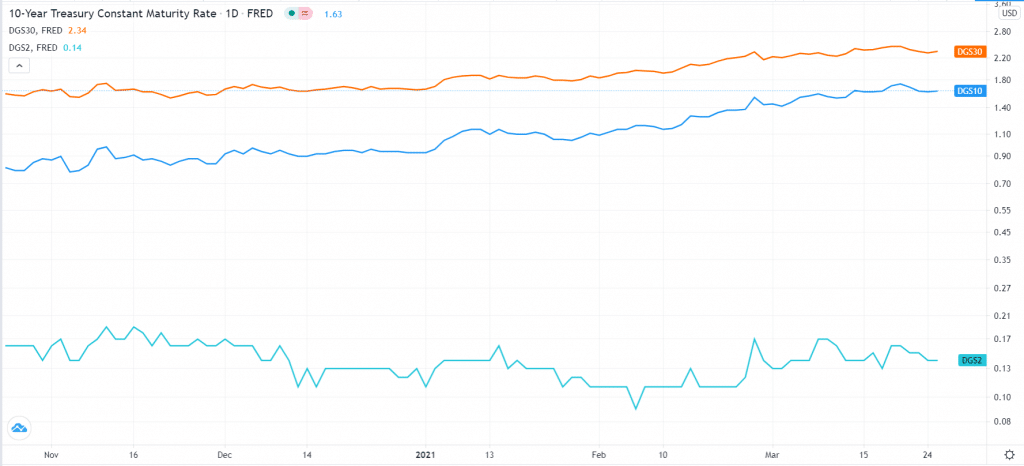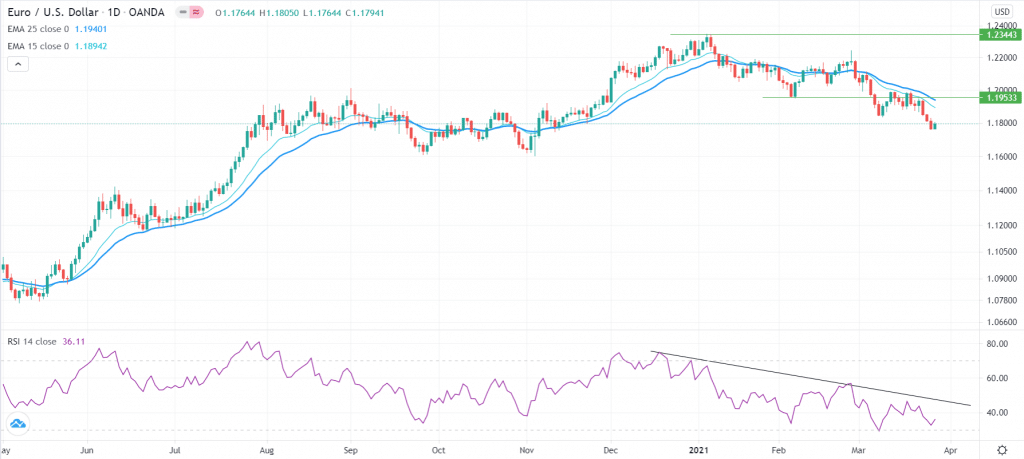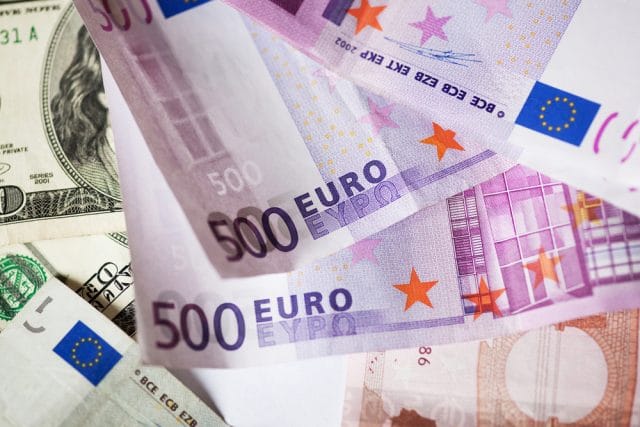The EUR/USD declined sharply in March as investors focused on the rising bond yields in the United States and the new wave of coronavirus in the European Union. It fell by more than 2% in March, making it the straight month in the red.
Rising bond yields
The financial market focused on the bond market in March. In the United States, as shown below, the yields on the ten, thirty, and two-year government bonds rose to the highest level in more than 12 months.
US bond yields

In the same period, the five-year breakeven inflation rate rose to the highest level in more than 10 years, as shown below.

This performance is primarily because of the rising hopes that consumer prices will keep rising later this year as the economy rebounds. Rising inflation, on the other hand, would lead to higher interest rates in theory.
Still, data released by the United States and the European Union suggested that inflation risks were overblown. For example, the overall Consumer Price Index (CPI) in the US rose to 1.7% in February, in line with expectations. Core consumer inflation dropped to 1.4%. While these numbers were slightly below the Fed’s target of 2.0%, they were milder than expected.
In the near term, however, inflation will keep rising because of the recently-signed $1.9 trillion stimulus package by the United States. Also, Biden is said to be considering another $3 trillion infrastructure project. While commodity prices have cooled, there is a possibility that their prices will rebound going forward.
At the same time, the EUR/USD reacted mildly to the assurances by the Federal Reserve. In its March decision and subsequent statements, the bank maintained that it will not hike rates or taper its asset purchases any time soon. It argued that the US economy was still uneven and in need of an easy money policy.
EU new wave of the virus
The EUR/USD also rose because of the efforts the US government has made on the virus. In the past few months, the number of daily infections has fallen as the country has increased its vaccination drive.
Europe is going in the opposite direction. In March, some countries in the region, like Germany, France, and Italy, announced new lockdown measures. This is partly because the overall rollout of the vaccine in the region has been relatively uneven. Indeed, last week, the member states announced new measures to curb vaccine exports after they realized that they had exported more than they had vaccinated.
Data from Europe have also been relatively concerning. While the manufacturing and services PMIs have been relatively strong, inflation has remained low. Also, retail sales and other vital numbers have been weak. As such, there is a possibility that the European Central Bank will maintain its easy-money policies for a while.
Looking ahead, the critical dates for the EUR/USD in April will be April 22, when the ECB will deliver its interest rate decision. The Fed will then make its decision a week later, on April 28.
EUR/USD technical overview
The EUR/USD pair declined sharply in March as the US bond yields rose. On the daily chart below, we see that the pair struggled to move below the support of 1.1953, which was the lowest level on February 4. It has also moved below the 25-day and 15-day exponential moving averages while the Relative Strength Index (RSI) has continued to decline. Therefore, the pair will likely continue falling in March as bears target the next key support at 1.1600.





